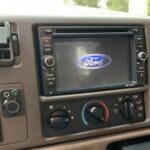Embarking on an engine swap, especially when mixing components from different generations, can present a unique set of challenges. For enthusiasts diving into Honda’s B-series engines, understanding the nuances between variants like the B18A1 and B18B1 is crucial. A common question that arises in such projects, particularly when dealing with OBD systems, revolves around the B18b1 Obd2 Firing Order.
While the original post highlights a user’s resourceful approach to using a B18A1 engine in an OBD2a vehicle due to parts availability, it opens up a broader discussion about compatibility and the specifics of these engines. Let’s clarify some key points related to the B18B1 and its firing order within the context of OBD2 systems.
The firing order of the Honda B18B1 engine, like many inline-4 cylinder engines, is 1-3-4-2. This sequence dictates the order in which the cylinders fire to produce power, and it’s a fundamental aspect of engine operation. It’s important to note that the firing order itself remains consistent regardless of whether the engine is configured for OBD1 or OBD2.
The distinction between OBD1 and OBD2 primarily concerns the engine management and diagnostic systems. OBD2 (On-Board Diagnostics II) is a more advanced system that provides greater monitoring and control over engine parameters, particularly emissions. While the B18B1 engine was originally designed for OBD2 systems in vehicles like the Acura Integra GS, adapting an older OBD1 engine like the B18A1 to function in an OBD2 car requires careful consideration of several components.
The user’s query about making the B18A1 OBD2 compatible to avoid jumper harnesses is valid. To achieve OBD2 compliance, the engine needs to interface correctly with the OBD2 ECU and its associated sensors. This often involves considerations beyond just the firing order, such as the distributor, sensors (like oxygen sensors, crank and camshaft position sensors), and the ECU itself.
While a B18B1 distributor may physically fit on a B18A1 engine block, the electrical connectors and internal components might differ due to OBD system variations. Similarly, using a B18B1 ECU in an OBD2a car with a B18A1 engine requires ensuring that all sensors and wiring are correctly matched and compatible.
In summary, while the b18b1 obd2 firing order itself isn’t the direct obstacle in such swaps, understanding the broader implications of OBD systems and component compatibility is essential. Successfully adapting a B18A1 engine for OBD2 requires attention to detail in wiring, sensor integration, and potentially ECU selection to ensure proper engine management and diagnostics within the OBD2 framework. Always consult detailed wiring diagrams and consider seeking expert advice when undertaking such modifications.
